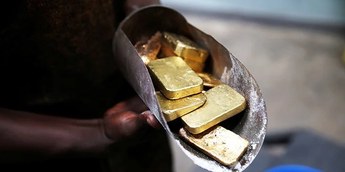Tanzania’s gold mining sector has recorded a major boost in the last four years, with total gold production rising sharply from 18,210 kilograms in 2021 to 27,000 kilograms by 2025. This figure marks a 40 percent increase and confirms the mining industry’s growing contribution to the country’s economy.
The announcement was made in Dodoma by the Geita Regional Commissioner, Mr. Martine Shigela, during a press briefing on the performance of Tanzania’s mining sector under the current administration led by President Samia Suluhu Hassan. Shigela, speaking on behalf of the Sixth Phase Government, said the growth was largely due to strategic reforms introduced by the President since she came into office.
According to the Commissioner, the Bank of Tanzania (BoT) has already collected about 600 kilograms of processed or value-added gold, estimated to be worth more than 700 million US dollars. This money, he said, has gone a long way in strengthening the country’s foreign reserves and boosting investor confidence.
He attributed the rise in gold production to the government’s clear vision and policy direction, which has created an enabling environment for both large-scale and small-scale miners. He specifically praised the efforts of small-scale miners, saying their contribution to gold output is now between 40 and 50 percent. Shigela noted that their involvement has helped diversify the mining sector and create more jobs at the grassroots level.
The Commissioner further disclosed that the government, under President Samia’s leadership, has extended direct support to small-scale miners across the country. This support includes the distribution of drilling and mining equipment, the issuance of mining licenses, and the deployment of trained geologists and mineral experts to help in mineral exploration. These interventions, he said, have helped increase gold yields while also promoting local ownership in the mining business.
He also mentioned that the Ministry of Minerals, led by Minister Anthony Mavunde, has played a crucial role in implementing the reforms. Through regulatory reviews, field inspections, and public awareness campaigns, the ministry has made mining safer, more productive, and more accountable to the Tanzanian people.
Mr. Shigela stressed that one of the key focus areas going forward will be the continued improvement of the mining environment. He said the government is determined to attract more private investors by reducing red tape, encouraging value addition, and opening up new exploration zones in gold-rich regions like Geita, Shinyanga, and Mwanza.
Geita, in particular, remains the country’s largest gold-producing region, with several active mines including Geita Gold Mine (owned by AngloGold Ashanti) and other privately owned operations. The region has also become a hub for small-scale mining activities, contributing significantly to gold exports and local employment.
Mr. Shigela ended his briefing by assuring citizens and investors alike that the government remains fully committed to supporting mining as a pillar of national economic growth. He said the achievements recorded in the sector show that with the right leadership and inclusive policies, mining can continue to uplift communities and increase Tanzania’s share in the global gold market.
The Tanzanian gold sector is one of the largest in Africa, with the country ranking among the continent’s top producers. With stable governance, improved regulations, and strong investment in infrastructure, Tanzania appears well-positioned to expand further in the coming years.
